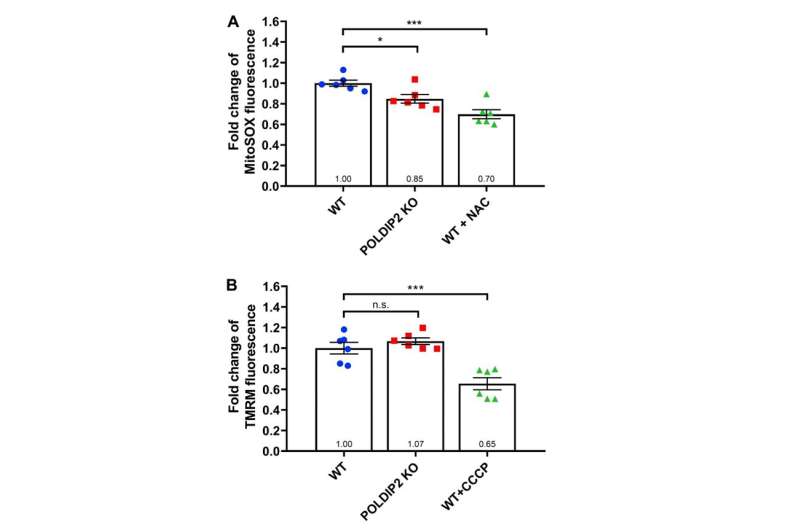This article has been reviewed according to Science X's editorial process and policies. Editors have highlighted the following attributes while ensuring the content's credibility:
fact-checked
proofread
Knockout of AMD-associated gene POLDIP2 reduces mitochondrial superoxide in retinal cells

A new research paper titled "Knockout of AMD-associated gene POLDIP2 reduces mitochondrial superoxide in human retinal pigment epithelial cells" has been published in Aging.
Genetic and epidemiologic studies have significantly advanced our understanding of the genetic factors contributing to age-related macular degeneration (AMD). In particular, recent expression quantitative trait loci (eQTL) studies have highlighted POLDIP2 as a significant gene that confers risk of developing AMD. However, the role of POLDIP2 in retinal cells such as retinal pigment epithelium (RPE) and how it contributes to AMD pathology are unknown.
In this new study, researchers from Royal Victorian Eye and Ear Hospital, University of Melbourne, St Vincent's Institute of Medical Research, University of Tasmania, and The University of Western Australia report the generation of a stable human RPE cell line ARPE-19 with POLDIP2 knockout using CRISPR/Cas, providing an in vitro model to investigate the functions of POLDIP2.
"We conducted functional studies on the POLDIP2 knockout cell line and showed that it retained normal levels of cell proliferation, cell viability, phagocytosis and autophagy. Also, we performed RNA sequencing to profile the transcriptome of POLDIP2 knockout cells," the researchers write.
Their results highlighted significant changes in genes involved in immune response, complement activation, oxidative damage and vascular development. They showed that loss of POLDIP2 caused a reduction in mitochondrial superoxide levels, which is consistent with the upregulation of the mitochondrial superoxide dismutase SOD2. This study demonstrates a novel link between POLDIP2 and SOD2 in ARPE-19, which supports a potential role of POLDIP2 in regulating oxidative stress in AMD pathology.
"In summary, we have generated a POLDIP2 knockout ARPE-19 cell line using CRISPR/Cas9 and studied the biological functions of POLDIP2. To our knowledge, this is the first functional study of POLDIP2 in retinal cells to understand its potential role in AMD," the researchers conclude.
More information: Tu Nguyen et al, Knockout of AMD-associated gene POLDIP2 reduces mitochondrial superoxide in human retinal pigment epithelial cells, Aging (2023). DOI: 10.18632/aging.204522





















